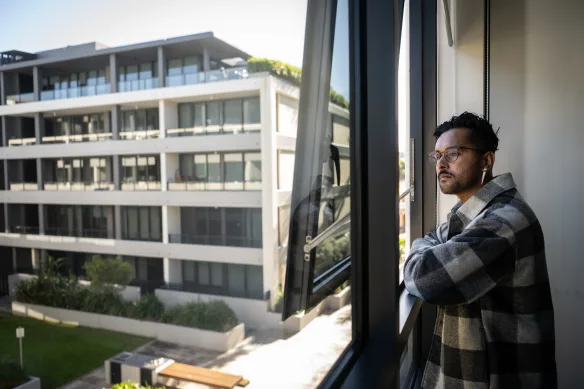Renting in some Sydney suburbs has become hundreds of dollars more expensive per week than this time last year, leaving tenants struggling to find and keep affordable homes.
Many of the largest rent hikes have been in inner and beachside suburbs – where advertised rents increased as much as $500 per week – but tenants across Sydney face steep jumps.
Median weekly asking rents increased by more than a third for units in Eastlakes (37.5 per cent), Haymarket (35.7 per cent), Eastgardens (34.3 per cent) and Zetland (33.8 per cent) over the year to June, the latest Domain Rent Report shows. They were among almost one in three analysed suburbs, where apartment rents jumped at least 20 per cent.
For houses, North Curl Curl had the largest increase at 39.6 per cent, while rents in Clovelly and Rose Bay lifted 37 per cent and 33.3 per cent, respectively, equating to a $500 increase in both suburbs.
More affordable Padstow Heights, Macquarie Park and Appin were also among the suburbs with the large house rent hikes.
Sydney-wide, apartments rents climbed 27.6 per cent to a median of $670, while house rents increased 12.9 per cent to $700 per week.
Domain’s chief of research and economics Dr Nicola Powell said strong migration, returning international students and a decline in people per household, had fuelled strong rental demand, amid sluggish new housing supply and investor activity.
Some of the largest rent increases were in inner suburbs, popular with new arrivals, many of which rebounded from sharp drops when borders were closed – and were now well above pre-pandemic levels. Affordability constraints and the reactivation of the CBD were also factors, Powell said.
“Inner-city units are likely to continue to see stronger rates of growth because the pressure point is coming … from that flow back [of people] from overseas.“
PRD Real Estate chief economist Dr Diaswati Mardiasmo said the rental shortage had been exacerbated by new housing projects being deferred or abandoned because of high construction costs, and labour shortages.
“You’ve got higher demand [as immigration returns], and supply hasn’t recovered,” she said.
“Then we are also getting investors tapping out … as the cost of their mortgage payments, body corporate, and rates have gone up,” she said.
While inflation was slowing, the pace of rent rises increased on the latest Consumer Price Index figures, Mardiasmo said. Rents could rise further still, but would soon max out.
“We will hit an affordability ceiling,” she said. “When the income is not enough … people are more willing to move further out … or they’ll go for a smaller place, or try to find [a place] to share.”
This was already reducing demand for some locations and homes, with some property managers reporting a drop in applications and increase in the time taken to lease, Mardiasmo said.
A slowdown in rent increases can’t come soon enough for tenants like Shahil Gupta, who is paying $480 per week for a one-bedroom unit in Parramatta, where rents increased 22.2 per cent.
Gupta and his fiance hoped for a two-bedroom, but realised it was impossible on their budget. By the time they inspected 30-odd units they felt lucky to get anywhere in decent condition, within a half hour walk of the train station.

“Every place we went to was either out of budget or there was just a lot of competition,” the 28-year-old said.
“[Many of these properties] were just meeting the bare minimum … the bathrooms were dirty, there were stains on walls, in locations far away from stations, and even then, the prices were so hiked up.”
Gupta has picked up a tutoring job, on top of the four days a week he works, to cope with rising living costs, but does not know how he would cope if his rent increased later this year when his lease lapses.
Tenants’s Union of NSW chief executive Leo Patterson Ross said high numbers of people were calling for assistance with rent increases, and at the end of tenancies – because they were unable to find an affordable rental.
“These increases are pushing people out of communities … and causing a lot of distress,” he said.
Stronger protections for renters, more housing supply and rent stabilisation measures – similar to limits on rent increases in the ACT – were needed to address the crisis, Patterson Ross said.
Source : TheSydneyMorningHerald

